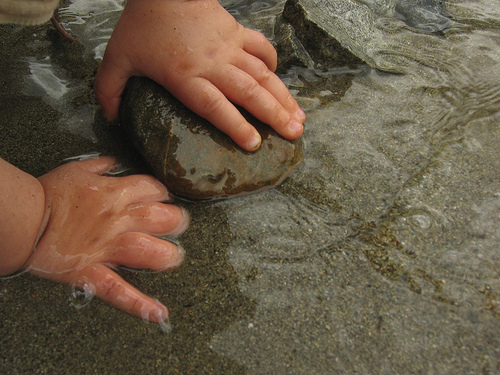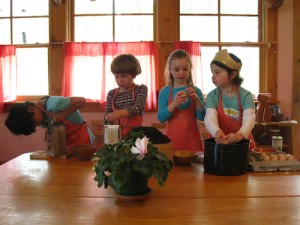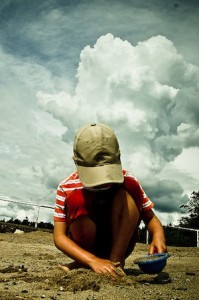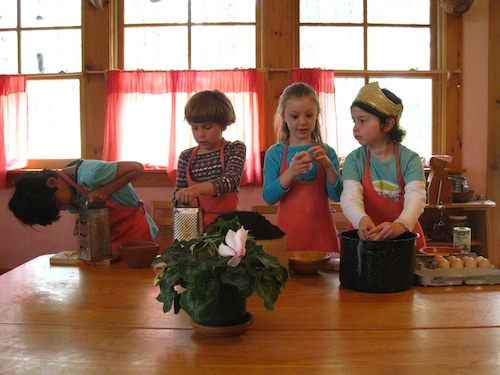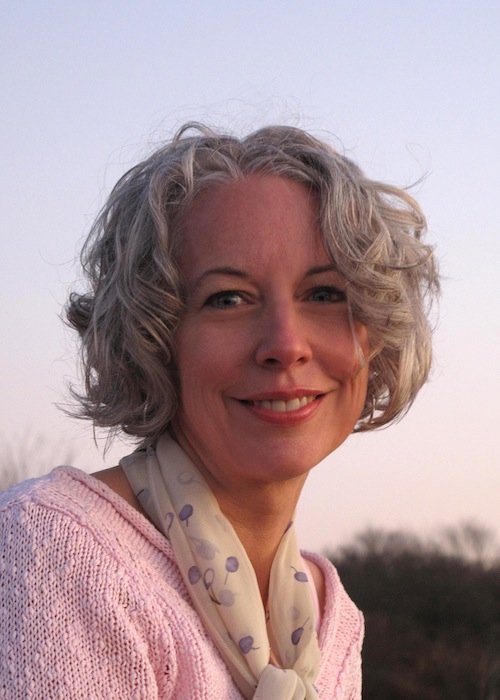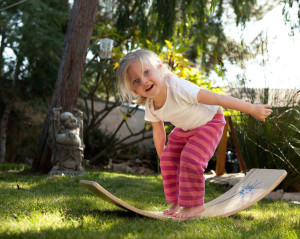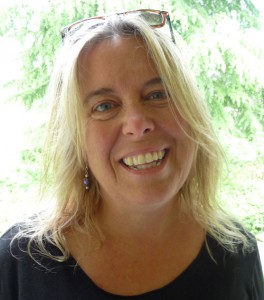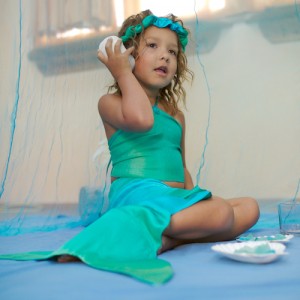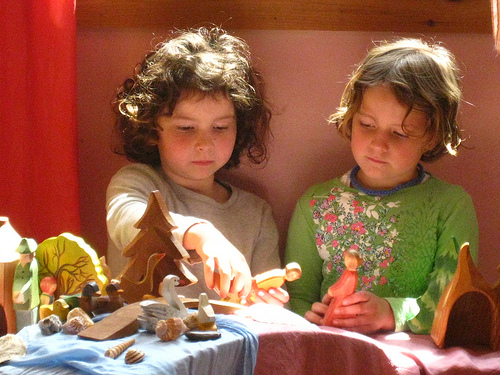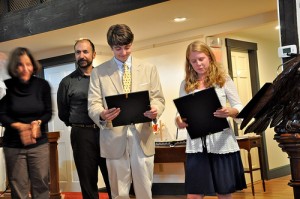Early childhood educators understand the importance of sensory play for young children. As a Waldorf early childhood teacher, I came to an even deeper understanding of how profoundly important it is to provide a young child with materials and playthings that will nourish his senses.
Rudolf Steiner, the founder of Waldorf education, once described a baby as being “wholly sense organ,” That is, she learns about the world and takes it in through all her senses (furthermore, Steiner claims we have twelve senses, and not just five, but that’s the subject for another post!).
As Waldorf early childhood educators, we seek to provide sensory stimuli that is soothing and nourishing to touch–materials such as natural wood, the soft wool of a lambskin, silks, dolls made of cotton and wool, smooth river stones, and so forth. Outdoors, a child’s senses are stimulated and nourished by playing in sand, water, mud and soil.
What current research shows us is that a child’s sensory experiences are aiding his brain development. Trillions of neural pathways are being formed and strengthened by his repeated sensorial experiences. This is one reason I am committed to carrying playthings and materials at Bella Luna Toys that will nourish and gratify a child’s senses.
For more information on the importance of sensory play, here’s a great blog post from Amanda Morgan, another (non-Waldorf) early childhood educator.
A Handful of Fun: Why Sensory Play is Important for Preschoolers

